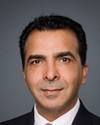Thank you, ladies and gentlemen, members of the committee.
My name, as you heard already, is Anthony Ashley. I am the director general of the Defence Research and Development Canada Centre for Security Science, and I have been in that position since the centre was established in 2006. As you already know, I am here with Mr. Meunier, who is my portfolio manager for surveillance, intelligence, and interdiction, which is one of the portfolios we manage through the centre.
This afternoon I would like to provide you with a brief overview of who we are and what we do, our relationship with Public Safety Canada, and the expertise we believe we can bring to bear to support the exploration of an electronic monitoring program.
The Centre for Security Science was established in 2006 through a memorandum of understanding between the Department of National Defence and Public Safety Canada. It is managed by Defence Research and Development Canada, or DRDC, as we call ourselves. DRDC is a special operating agency that's actually within the Department of National Defence, and its primary task in that context is to provide S and T support to the department and to the Canadian Forces.
The mission of the Centre for Security Science is to pull requirements and priorities from the policy and operational communities and to task the science and technology community in government, industry, academia—and also our international partners, I might add—to develop solutions that address these priorities. So we play sort of a spanning role between the operational policy communities and the real technologists and engineers out there in the community.
Among my centre staff are scientists and engineers with a wide range of relevant experience, but also those who possess expertise in areas such as capability-based planning, risk assessment, operational research, knowledge management, project management, community building, and application of scientific methodologies. We therefore believe we are well positioned to provide trusted advice to our client base.
Over the years the Centre for Security Science has built a network of experts it can draw upon to serve the needs of the public safety and security community. So, as I mentioned, ours is very much a spanning activity.
Through hundreds of projects and activities, the centre and its partners have improved Canada's capabilities, ensuring that responders, planners, and policy- and decision-makers have access to the scientific and technical knowledge, tools, processes, and advice they need to protect Canada's interests.
Last Thursday you heard testimony emphasizing the need for scientifically validated evidence to support decision-making on electronic monitoring. This is where the capabilities of the Centre for Security Science could be brought to bear to provide advice on technical requirements that would need to be met in order to meet operational requirements as defined by Correctional Service of Canada or others. I emphasize there the difference between technical requirements and operational requirements.
In relation to electronic monitoring, Defence Research and Development Canada has experts in navigation systems who intimately understand GPS technology, including such issues as jamming and operation in challenged environments. We can also draw upon expertise in data management and geographic information system-based display technology, as well as other expertise from within the Department of National Defence, for testing of these types of devices.
We also have access to a broad range of experts in other government departments, industry, and academia through our networks and communities of practice.
In conclusion, the Centre for Security Science can bring to the table the technical expertise necessary to support Public Safety Canada and Correctional Service Canada decisions surrounding the technical requirements and performance factors of electronic monitoring devices.
That is my opening statement.
Thank you very much.



